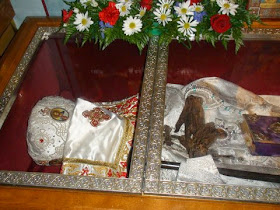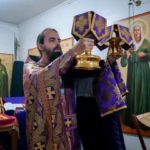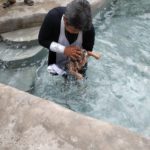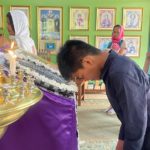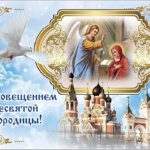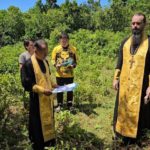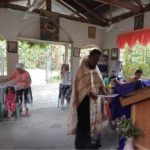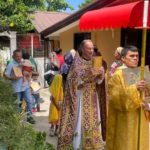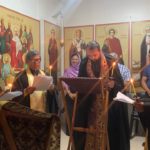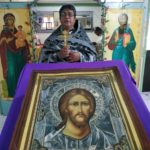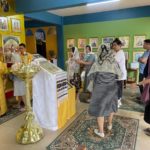Saint John of Shanghai (1896-1966) is our contemporary. He did not have the majestic appearance of a white-haired old man: small, ugly, with a speech defect, often in a crumpled cassock and bare feet. Some of the people around him were even embarrassed for “such a Bishop”, because he served in major cities: Shanghai, Paris, Brussels, San Francisco.
He often went barefoot, and once an order came from his superiors: wear shoes. The Bishop wore them slung over his shoulder with the laces tied. A new order has arrived: “put on your feet”, the Bishop was obedient and put on.
Saint John took monastic vows at the age of 30. Since then, the prayer has become a greater reality for him than the cares and experiences of earthly life.
Since his monastic tonsure, Saint John never went to bed, sleeping sitting up only a few hours, setting aside the night for prayer. He ate, often mixing all the dishes: soup, garnish, compote – so that earth food did not seem like a pleasure. Already then, Saint Nicholas of Serbia said of him: “if you want to see a living Saint, go to father John in Bitol!»
At the age of 38 (1936), against his will, but for obeying his spiritual mentor, Metropolitan Anthony Khrapovitsky, he became a Bishop.
With the episcopate, the Saint did not change his ascetic practice. He constantly prayed, served the divine Liturgy every day, fasted strictly – ate only once late in the evening, and ate only prosphora during fasts. The Saint visited the sick daily and demanded the same from his clergy. In order not to be praised, the Bishop made a fool of himself – he was often late for Church, went barefoot and in rumpled clothes. But in all that concerned the service, the he was very strict with himself and others. He never spoke in the altar, and after the service he remained in it for several hours.
The first place of the Episcopal Ministry of St. John was China.
In Shanghai, where Saint John was sent in 1934 from Belgrade, there were about 20 thousand Russians. Bishop John found a huge number of homeless orphans on the streets of the city. The Saint created an orphanage. He often collected sick and starving children from the streets of Shanghai’s slums. The orphanage existed from 1935 to 1951, during that time its pupils were more than 3,500 orphans — Russian and Chinese.
During the Japanese occupation of China, the shelter often had no food. Then the Saint prayed, and unknown people came, bringing the necessary things.
When the Communists came to power, Russians from China fled to the Philippines. In 1949, five thousand refugees were on the island of Tubabao. The Bishop went around the island every day and protected the island from seasonal typhoons with prayers and the sign of the cross. And indeed: 3 years of typhoons bypassed the island, but as soon as the last batch of Russian refugees were taken out, a strong typhoon hit and almost completely destroyed all its buildings.
The refuge in the Philippines was temporary, but the Russians were not given visas to Europe or USA. The Saint went to Washington to take care of this. As a result, the US Congress changed the refugee law, and Russians were able to enter the USA. Some of the Russian refugees went to Argentina and Australia.
The Saint was appointed Archbishop of Brussels and Western Europe in 1950. Many miracles and healings occurred through his prayers. In Paris a local Catholic priest told his parishioners: “You say that there are no miracles or saints now. What proof do you need if Saint John Barefoot is walking the streets of Paris today?”
In 1962, Saint John was transferred to San Francisco. The Saint found a mess in the finances during the construction of the Cathedral, and called the debtors to account. Debtors sent complaints to the Synod. This was taken advantage of by the Saint’s detractors: they raised the question of the” illegality ” of his appointment to the pulpit in San Francisco. There were many in the Synod who despised the living Saint as “an insufficiently subtle theologian” and “a bad administrator”.
The Russian community in San Francisco was thrown into disarray. At parish meetings, the Saint was shouted and insulted. Among the persecutors of the Saint were even those whom he cured of cancer and other serious diseases. The case went to trial, where the Bishop was acquitted. Although the truth prevailed, the last years of Saint John were filled with bitterness of slander and persecution.
It was said that Saint John knew about the time and place of his death. On the day of his death, July 2, 1966, he served the divine Liturgy and after the service prayed in the altar for three more hours. The Saint died a few hours later in his room, praying before the miraculous icon of the Sign of the Mother of God.
For six days the Saint’s body lay in a coffin not embalmed, but despite the heat, there was no smell of decay. The mayor’s office of San Francisco made an exception, allowing the Saint to be buried, despite the sanitary ban, in the crypt of the Cathedral in honor of the image of the Mother of God “Joy of all sorrows”, which the Saint built and served in.
In 1993, a special Commission for the glorification of Bishop John discovered his relics and found them incorrupt. In 1994, Saint John of Shanghai was canonized.


